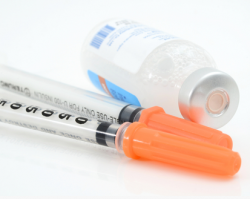
Botulinum toxin, or “Botox“, has been used for quite some time as a cosmetic aid in physicians and dentists offices. It can be utilized to make us look and feel younger. Did you know that botox has many other medical uses? It turns out that botox can be used to aid in therapy for many dental, facial pain disorders.
Botulinum toxin, or “Botox“, has been used for quite some time as a cosmetic aid in physicians and dentists offices. It can be utilized to make us look and feel younger. Did you know that botox has many other medical uses? It turns out that botox can be used to aid in therapy for many dental, facial pain disorders.
Botox As A Medicine
Botox can be used for the following disorders:
–Temperomandibular Joint Disorder (TMD) and Facial Pain Management – TMD is a very difficult disorder to treat since its symptoms are so varied. The goal of treatment in TMD has been to provide non -invasive, reversible treatment options. Surgery is an option, although rarely utilized, due to it’s limited success. Botox gives the dentist the ability to relieve TMD and facial pain symptoms for a short period of time (weeks to months per treatment). In TMD and facial pain disorder, there are muscular trigger points that radiate outward through the nerve bundles. The injection of Botox into these trigger point areas, “freezes ” the ability of the muscle by paralyzing it for a while, can help relieve the intensity of the TMJ muscle contractions. The relief can last up to three months. This temporary muscle paralysis makes Botox a great tool in the treatment and management of TMD and facial pain disorders.
–Teeth Clenching (Bruxism) – This treatment becomes somewhat tricky as the dose is very important here. Too much botox into the area of the mastication muscles can paralyze these muscles and disrupt a person’s ability to chew and speak. Too small a dose and it has little to no effect. The proper dose will reduce the intensity of the muscles contraction, allowing the patient to still be able to chew and speak properly. When done correctly, the patient will see relief from facial pain and limit the damage done by the teeth clenching, as the force is no longer there to do damage to oral tissues.
–Orthodontics – Our muscles play a huge role in where our teeth line up. Following orthodontic therapy some patients teeth will relapse and this may be due to placement of that individual’s musculature. Many patients have an over active mentalis muscle that often causes relapse of the teeth and may cause spasm of the muscles. Botox gives us the ability to reduce these spasms and contractions allowing for limited relapse following orthodontic treatment.
–Treatment of Migraine, and other Headaches – Generally, migraines have been a source of the unknown for many patients. Migraines have multiple symptoms beyond just headaches. These can include nausea, dizziness, and even light sensitivity. The use of Botox can relieve these symptoms. The placement of a few well placed injections around the temples, forehead, and neck/shoulder area can ease these symptoms by preventing the pain signals to reach the nerve bundles on the head and neck. This can also relieve severe headaches in the forehead region, if you suffer from them frequently. This can get quite expensive but for those suffering it can be well worth the cost to feel pain free again.
–Controlling Excess Saliva Production (also called sialorrhea) – The more common term for this is drooling. While there are other treatments for this, botox gives the ability to stop the excessive salivary production by injecting into the parotid and submaxillary glands. Again, this treatment is very dose specific. Too high a dose can disrupt a person’s chewing ability and also lead to dry mouth (xerostomia).
–Facial Asymmetry – In many of us, the muscles of the face may be asymmetrical leading to an imbalanced look to the face. Botox can restore that symmetry by balancing the facial muscles. Eyebrow lift, or depression of the brow can be enhanced with properly placed botox.
–Gummy Smile – This is shown as a smile that shows too much gum tissue. This usually is the result of the lip rising too high when smiling. Injecting Botox into the upper lip weakens the retractor muscles of the upper lip so that it won’t raise as high and your smile will seem better-balanced.
–Trigeminal Neuralgia– This extremely painful condition can be brought about by something as simple as air blowing on your face. Freezing a few select muscles on the affected side of the face can bring relief from extreme pain, and piece of mind. Not having to worry about accidentally setting off the facial pain can give you your life back.
Conclusion
As with any botox application, training is critical. The injector should be well versed in not only a person’s anatomy but also in the use of the right dosing of the botox. Too little and there will be no relief from symptoms while too much botox can lead to disabling effects. Botox gives patients and doctors a new world of possible treatments that can lead to better lives for all of us.
© 2013, Marielaina Perrone DDS. All rights reserved. Dental Implants Las Vegas
image: Botox/shutterstock

